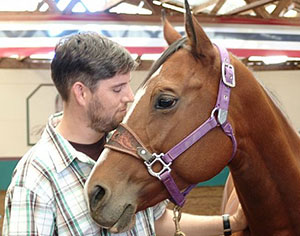Cherry eye in dogs
Share This Everywhere!
 Get More Pet Tips
Get More Pet Tips
Content provided Pet Talk with Dr. B is meant for educational purposes on health care and medical issues that may affect pets and should never be used to replace professional veterinary care from a licensed veterinarian. This site and its services do not constitute the practice of any veterinary medical health care advice, diagnosis or treatment.
CHERRY EYE IN DOGS
All dogs have a special protective third eyelid on the inside corner of their eyes that is often not visible. This eyelid provides protection to the eye and also contains a gland that produces about 35% of the eye’s tears. The tears from this gland are responsible for lubricating the cornea. When the gland comes out of its position, the condition is called cherry eye in dogs. Cherry eye can occur in one eye or oftentimes in both eyes.
Many reasons can cause cherry eye in dogs. The most common reason is thought to be a genetic weakness in the tissue that connects the third eyelid to the surrounding structures of the eye. A small ligament that holds in the gland can stretch or break down for an unknown reason. Dog breeds such as Boston terriers, cocker spaniels, bulldogs, and beagles are commonly affected by this disease.
A pink mass that extends from the inside corner of the dog’s eye is the most noticeable symptom. Sometimes a thick, watery discharge can also be seen from the affected eye. After the gland is prolapsed, it may swell due to the lack of blood circulation to the area. Cherry eye can be irritating for dogs and they may begin to scratch or rub at their eyes, which has the possibility to create more damage to the eye. Therefore, an affected dog must be seen by a veterinarian as soon as the owner notices such symptoms. The longer that the gland is exposed, the less it will be functional.
A diagnosis by a veterinarian can often be made based upon a physical exam. A veterinarian will examine the dog visually in order to see if the gland has prolapsed. Even though symptoms may only be present in a single eye, both eyes should be examined carefully to make sure that other eye is not affected. After the diagnosis is made, the veterinarian can recommend a treatment.
The best treatment for cherry eye is surgical replacement of the gland. There are different types of surgical procedures that are available to correct cherry eye in dogs. All treatments should begin with anti-inflammatory medications to reduce the size of the gland and to make the surgery easier to perform and less traumatic on the dog. Previous surgical correction involved removing the entire gland that was prolapsed. Since a large portion of the eye’s tears are produced by the gland, these dogs are at an increased risk of developing dry eye. Removing the gland in no longer considered a good option because of this complication.



